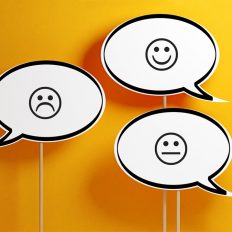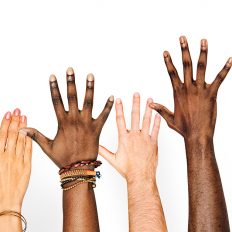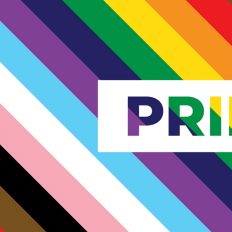The 2021 film “CODA” made history when the predominantly Deaf cast would take home three Oscars, including Best Picture, for its heartwarming tale of a young woman who is a CODA (Child Of Deaf Adults) as she attempts to pursue a future in music. This kind of visibility was monumental for the Deaf community as it not only showcased the difficulties the Deaf community faces but also raised awareness that disabilities are still so underrepresented in popular culture and the public space. With an estimated 61 million adults living with a disability, it is a key audience that deserves recognition and to be met with equity. Technology continues to improve and here are some new ways it can be utilized to make events more accessible.
How Events Can Be Heard
The advancements for the hearing impaired have been coming more and more to the forefront. We’ve seen viral videos as interpreters are making rap music more accessible by signing more stylistically at concerts to capture the tone and message of the song. We’ve also seen the Google commercial of a CODA being able to use Live Captions over Google Meet to involve his parents in the raising of his child. But how can we include such technology in our events, particularly in the hybrid module?
While translators on stage assist for those who attend in-person, now it is paramount for there to be equally accessible software for virtual attendees. Just in April 2022, Webex Events partnered with SyncWords to add live, human captioning and automatic translations to these events on top of their already established offerings of meetings, webinars and webcasts. The intuitive platform’s accuracy in real-time caption and translations not only makes large-scale, multi-session conferences more user-friendly for the hearing-impaired but also for foreign language participants, adding an extra layer of accessibility.
How Events Can Be Seen
When events became virtual, the inability to see a screen made events more difficult and isolating for the Blind to attend. It has only been a few years, but the technology is rapidly striving to improve for those with visual impairments. While YouTube and Zoom are familiar platforms for the Blind to access for virtual components, it’s also important to keep website accessibility in mind by making them “screen reader” friendly. Instead of using their eyes, the user instead uses “screen reader” software that reads alt descriptions to them. By making the website as clean and simplistic as possible (i.e., not having too much text alongside media so the software doesn’t read the description simultaneously as other assets play), this will improve the user experience.
However, AI is not limited to the virtual landscape as it’s quickly adapting to help with both hybrid and in-person experiences as well. Microsoft Soundscape has been introduced to empower the blind to have richer awareness of their surroundings. By using 3D audio cues instead of step-by-step navigation apps, Soundscape creates an enhanced ambient awareness and as it constantly updates, the user is able to understand and navigate the world around them in real-time. A more expensive form of technology comes in the form of Envision Glasses, which can not only also assist in navigation, but scan faces and read documents for the Blind in an intuitive way so they know what to anticipate. The headset also allows them to go handsfree to use a cane or walk a seeing-eye dog simultaneously, and a camera placed close to the eyes allows the user to know exactly what lies ahead in the direction they are looking. Imagine how this would open up the world of events in a way literally unseen before?
How Events Can Be Felt
As the second-most common disability, cognitive sensitivities often make attending events a challenge. For those who struggle with sensory overload, an in-person event can be nearly impossible. While an event organizer can pick a space that allows controlled lighting, create quiet zones to provide temporary breaks, and provide sensory-friendly kits that include sunglasses, noise-cancelling earplugs, and sensory-friendly toys, it still can be a difficult experience for the individual attendee. However, with improved augmented reality (AR), attendees can be guided through the attendee experience. CSUN unveiled ParaShop in 2021 that guided users through a shopping experience so that they did not become overwhelmed by the uncertainty of what to do next, which event organizers could also put into their own event practice. But if it is too overwhelming, AR also allows attendees to bring the event into a safe space they are familiar with. Like Apple has utilized to showcase their products before release, AR objects can be a creative way to add elements in any environment so all attendees can see some of the features of an event. The virtual elements also elevate the experience for not only those with sensory sensitivity but mobility issues as well, making it a truly versatile tool.
It’s important that when we consider our events, we are considering ALL of our audiences’ experiences. It’s not as simple as meeting regulation but incorporating the needs of attendees naturally into the journey they will take. By making events more accessible, the reach goes beyond just one person’s experience but also taps into an entire community who just wants to have the opportunity to experience what a brand can offer ANY consumer. And with technology only continuing to improve, we can ensure that the Deaf will be heard, the Blind will be seen, and those with disabilities will have no limitations in their event experiences.



